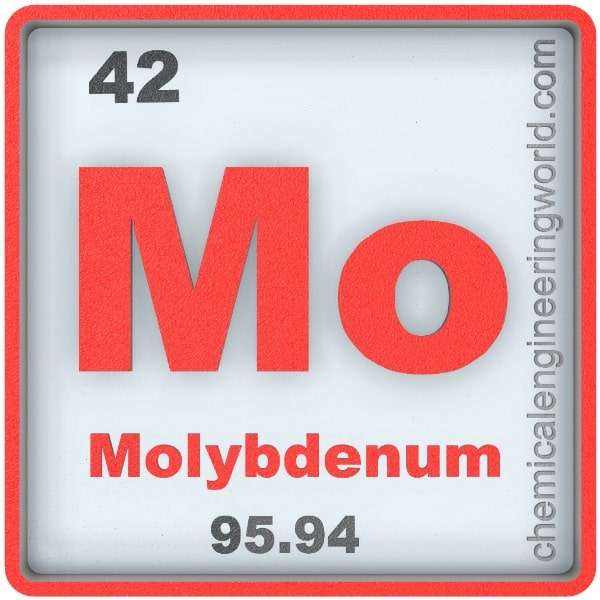Molybdenum Element Properties and Information

Molybdenum Element Properties and Information
Molybdenum is forty-second element on the periodic table. Elements are arranged in the periodic table on the basis of the atomic number. Atomic number is the number of protons in the nucleus of the atom. Molybdenum has an atomic number of 42. It is located in the Group 6 and Period 5 of the periodic table of elements. It is denoted by Mo. The name is derived from a character in Greek word ‘Molybdos’ meaning lead.
Peter Jacob Hjelm took an ore named molybdenite which was suspected to contain a new element by the chemists and Scientists of that time. He mixed ore with water to form acid and then grounded this acid with linseed oil to obtain a paste. The paste was heated to red heat which yielded the suspected new metal, molybdenum. He announced the result in 1781.
Molybdenum doesn’t occur in free state. The main molybdenum ore is molybdenite.
Physical Properties
- Molybdenum is a silvery metal with a grey cast.
- The atomic mass of molybdenum is 95.94
- The melting point of molybdenum is 2610°C
- The boiling point of molybdenum is 4825°C
- The density of molybdenum is 10200 in S.I. units at 20°C
- Molybdenum has one of the lowest coefficient of thermal expansion among all commercially used elements.
- There are 35 known isotopes of molybdenum among which 7 occur naturally. The isotopes range from 83 to 117 in molecular weight.
Chemical Properties
- Molybdenum doesn’t visible react with water or oxygen at room temperature.
- Most molybdenum compounds have low solubility in water.
- Molybdenum metal starts to get oxidised weakly above 300°C temperature and bulk oxidation occur above 600°C.
Methods of Production
Roasting and reduction: Molybdenite ore is roasted in air at a temperature of 700°C. This gives molybdenum (VI) oxide and sulfur dioxide. Then it is subjected to extraction using ammonia to obtain ammonium molybdate. Ammonium molybdate is converted to ammonium dimolybdate. Heating this gives molybdenum trioxide. This oxide is reduced with hydrogen to yield metallic molybdenum.
Relevance in Chemical and Related Industries
- Alloys: About 86% of the molybdenum produced is used in metallurgy. Molybdenum has the ability to withstand significant temperatures simultaneously going through insignificant expansion or softening. Thus it is useful in high temperature applications. It is also used in highly corrosive application. It has high weldability.
- Fertilizer: Molybdenum is added in fertilisers to fulfill the nutrient requirements in some plants. One example is Cauliflower.
- Catalysts: Molybdenum based catalysts are very versatile catalysts used for oxidation in variety of reactions.
- Ceramic Industries: Molybdenum disilicate is an electrically conducting ceramic used in applications above 1500°C. Lead molybdate is used as pigments in ceramics.
Relevance in Other Industries
- Medical imaging: Radioactive isotope molybdenum-99 is used to generate technetium-99m which is used for medical imaging.
- Anode replacement: Molybdenum based anodes replace tungsten in many applications pertaining to low voltage X-ray sources.
Health Effects on Exposure
Toxic: Molybdenum can cause liver dysfunction and it is also observed to cause hyperbilirubinemia.
Effects on Surroundings
- Animals: Although small amounts of molybdenum is necessary for proper functioning of the organs. Too much of it is observed to cause fetal deformities. Even 10 ppm of molybdenum in fodder can put the life of animal at risk.
References:
https://en.m.wikipedia.org/wiki/Molybdenum
































